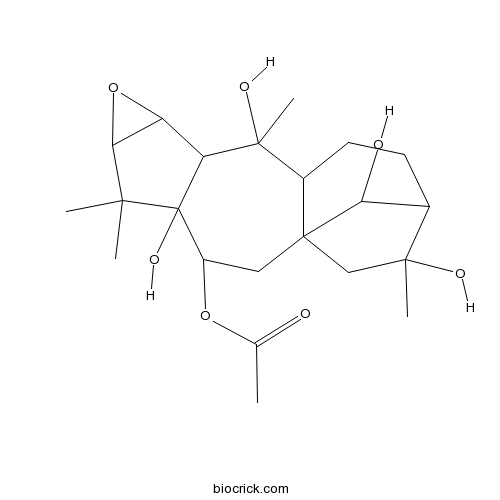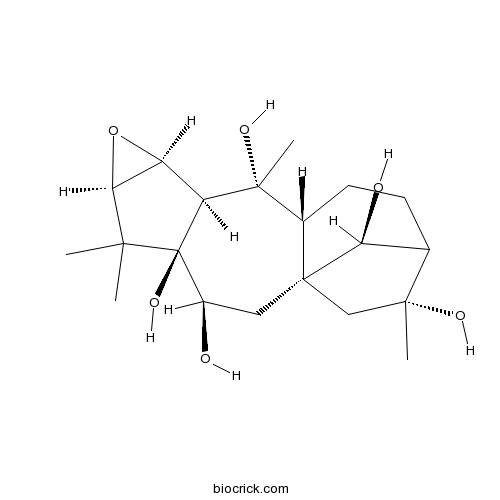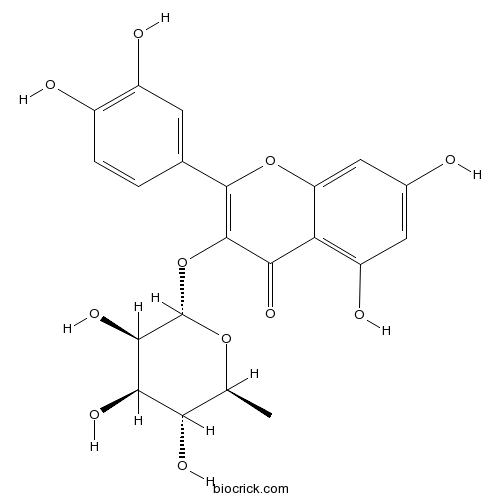Rhododendron molle
Rhododendron molle
1. The products in our compound library are selected from thousands of unique natural products; 2. It has the characteristics of diverse structure, diverse sources and wide coverage of activities; 3. Provide information on the activity of products from major journals, patents and research reports around the world, providing theoretical direction and research basis for further research and screening; 4. Free combination according to the type, source, target and disease of natural product; 5. The compound powder is placed in a covered tube and then discharged into a 10 x 10 cryostat; 6. Transport in ice pack or dry ice pack. Please store it at -20 °C as soon as possible after receiving the product, and use it as soon as possible after opening.
Natural products/compounds from Rhododendron molle
- Cat.No. Product Name CAS Number COA
-
BCN2810
Rhodojaponin II26116-89-2
Instructions

-
BCN2809
Rhodojaponin III26342-66-5
Instructions

-
BCN2807
Rhodojaponin V37720-86-8
Instructions

-
BCN5665
Quercitrin522-12-3
Instructions

Rhododendron Molle (Ericaceae): phytochemistry, pharmacology, and toxicology.[Pubmed: 30047461]
Rhododendron molle G. Don, belonging to the Ericaceae family, is a traditional Chinese medicinal plant with a wide spectrum of pharmacological effects. This paper aimed to review the phytochemistry, pharmacology and toxicology of R. molle, and to discuss the tendency of future investigations on this plant. A systematic review of literature about R. molle was carried out using resources including classic books about Chinese herbal medicine, and scientific data bases including CNKI, Pubmed, SciFinder, Scopus, and Web of Science. Over 67 compounds, including diterpenes, triterpenes, flavonoids, and lignans, had been extracted and identified from R. molle. The extracts/monomers isolated from the root, flower and fruits of this plant were used as effective agents for treating pains, inflammatory diseases, hypertension, and pest, etc. In addition, diterpenes, such as rhodojaponin III, were considered as the toxic agents associated with the toxicities of this plant. These findings will be significant for the discovery of new drugs from this plant and full utilization of R. molle.
De novo transcriptome analysis of Rhododendron molle G. Don flowers by Illumina sequencing.[Pubmed: 29892944]
Rhododendron molle G. Don occupies an important phylogenetic node in the genus rhododendron with unique yellow flower and medicinal functions. However, only limited genetic resources and their genome information are available for the generation of rhododendron flowers. The next generation sequencing technologies enables generation of genomic resources in a short time and at a minimal cost, and therefore provide a turning point for rhododendron research. Our goal is to use the genetic information to facilitate the relevant research on flowering and flower color formation in R. molle. In total, 66,026 unigenes were identified, among which 31,298 were annotated in the NCBI non-redundant protein database and 22,410 were annotated in the Swiss-Prot database. Of these annotated unigenes, 9490 and 18,680 unigenes were assigned to clusters of orthologous groups and gene ontology categories, respectively. A total of 7177 genes were mapped to 118 pathways using the Kyoto Encyclopedia of Genes and Genomes Pathway database. In addition, 8266 simple sequence repeats (SSRs) were detected, and these SSRs will undoubtedly benefit rhododendron breeding work. Metabolic pathway analysis revealed that 32 unigenes were predicted to be involved in carotenoid biosynthesis. Our transcriptome revealed 32 engines that encode key enzymes in the carotenoid biosynthesis pathway, including PSY, PDS, LCYB, LCYE, etc. The content of β-carotene was much higher than the other carotenoids throughout the flower development. It was consistent with the key genes expression level in the carotenoid biosynthesis pathway by the Illumina expression profile analysis and the qRT-PCR analysis. Our study identified genes associated with carotenoid biosynthesis in R. molle and provides a valuable resource for understanding the flowering and flower color formation mechanisms in R. molle.
Hot off the Press.[Pubmed: 29878011]
A personal selection of 32 recent papers is presented covering various aspects of current developments in bioorganic chemistry and novel natural products such as mollebenzylanol A from Rhododendron molle.
Anti-inflammatory Grayanane Diterpenoids from the Leaves of Rhododendron molle.[Pubmed: 29272126]
None
Rhodomollacetals A-C, PTP1B Inhibitory Diterpenoids with a 2,3:5,6-Di-seco-grayanane Skeleton from the Leaves of Rhododendron molle.[Pubmed: 28952318]
None
Rhodomollanol A, a Highly Oxygenated Diterpenoid with a 5/7/5/5 Tetracyclic Carbon Skeleton from the Leaves of Rhododendron molle.[Pubmed: 28703596]
A novel diterpenoid with an unprecedented carbon skeleton, rhodomollanol A (1), and a new grayanane diterpenoid, rhodomollein XXXI (2), were isolated from the leaves of Rhododendron molle. Their structures were elucidated using comprehensive spectroscopic methods and single-crystal X-ray diffraction. Compound 1 possesses a unique cis/trans/trans/cis/cis-fused 3/5/7/5/5/5 hexacyclic ring system featuring a rare 7-oxabicyclo[4.2.1]nonane core decorated with three cyclopentane units. The plausible biosynthetic pathway for 1 was proposed. Compound 1 exhibited moderate PTP1B inhibitory activity.
Rhodomollins A and B, two Diterpenoids with an Unprecedented Backbone from the Fruits of Rhododendron molle.[Pubmed: 27841292]
None


